Derek Cohen (Perth Oz)
Established Member
The Lie Nielsen Face Joinery Float - Reviewed
Very recently Lie Nielsen released a set of joinery floats that were fashioned after the planemaker’s floats they were producing in association with Clark & Williams. These floats are intended to aid in the fine-tuning of joints used in cabinetmaking. There are three floats in all, two for mortices and one for tenons. The float under review is the Face Float for tuning tenons.
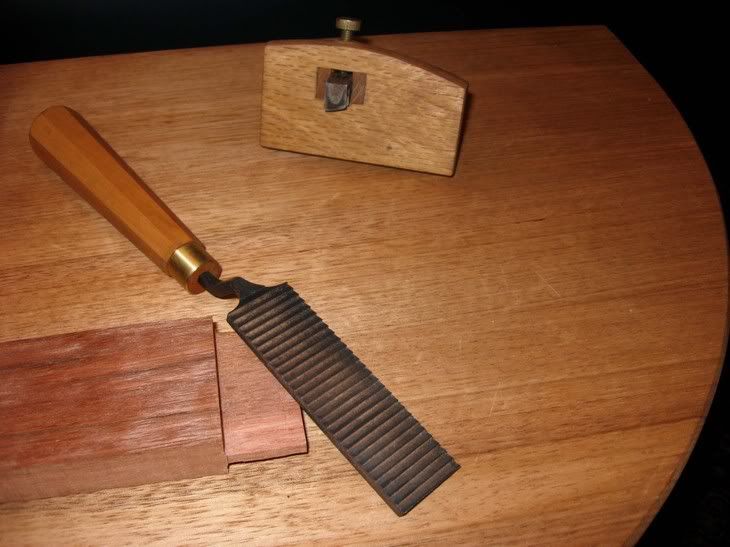
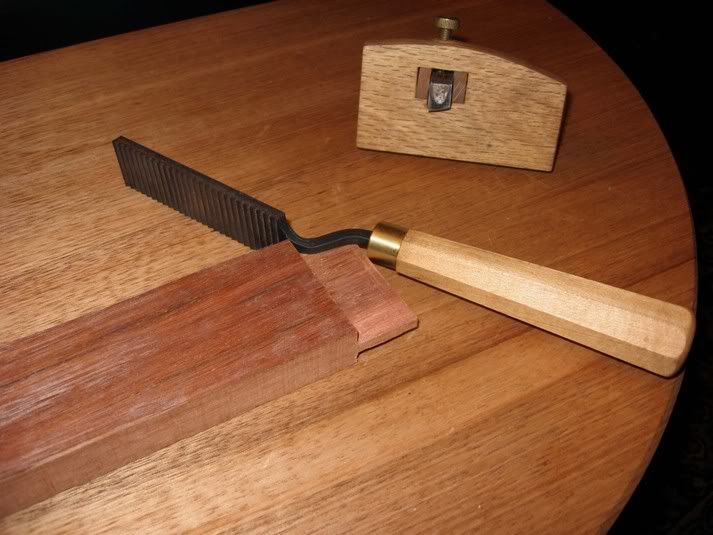
Construction and Dimensions
The face float is available in a push or pull version. I purchased the push version because I found this to be the more natural action.
According to the LN website, these are made from S-7 tool steel, hardened and tempered to RC 50-52 for edge life and resharpening ability. 8tpi, 80° rake angle, maple handles. It is 1” wide and 3 3/8” long.
Preparation
While the floats come sharpened and may be used straight out of the box, it is recommended that the teeth be first filed. I will reinforce this recommendation as I did initially use the float without filing the teeth, and was disappointed in the performance.
To illustrate the difference, I did a test with half the teeth filed and the other half original. Here is the result:

Top unfiled, bottom filed.
Filing the teeth
LN suggests a 6 inch double extra slim taper file for sharpening. I did not have one to hand, so first tried with a 4 inch double slim taper Groblet, a file I use for sharpening a 15 tpi dovetail saw. This proved to work exceedingly slowly, and so I turned to a 6” extra slim Nicholson file. This ended up being a good choice.
Finally I found a use for my Zyliss vise! It made a good support for filing the float.
From the LN website ….
Initial sharpening: The black oxide coating of the floats is an aid in the initial sharpening. Simply file away the black coating to shiny metal for the first sharpening. Use care to apply a slight even pressure on the file to maintain the cutting geometry. On wider sections you may notice some very slight distortion showing as slightly low spots on the faces of the teeth. This is normal and is the result of volumetric changes and stresses of heat treating. It’s not necessary to remove the hollow, establishing a good cutting edge on the teeth is the goal.
The full instructions may be found on the LN website.
Below I am supporting the file flat on the face and against the gullet.

Here is the half-original, half-sharpened result. Note the hollows in some of the faces.
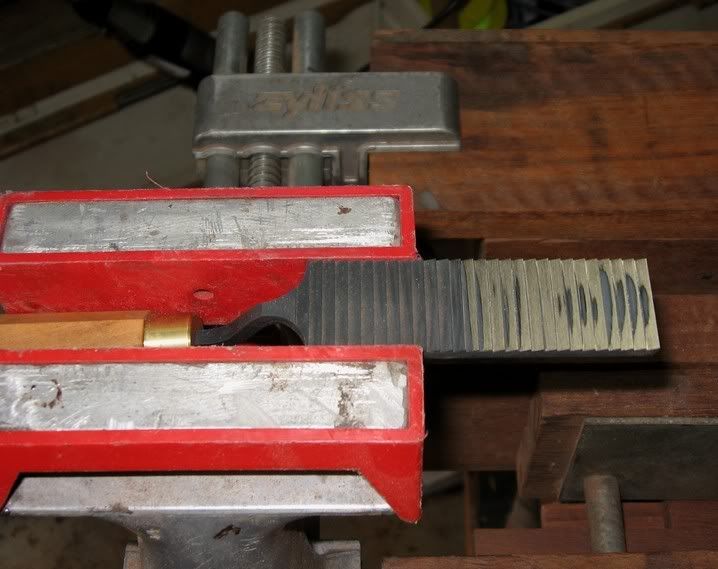
The LN face float is well made. Perhaps the only criticism is the need to sharpen it before it can be used. On the other hand, this will need to be done at some time anyway - not as often as a plane blade, but more much frequently than a handsaw. The initial filing was a relatively straight forward affair, and time will tell whether this is a task that remains so.
Cutting and Tuning Tenons
I generally cut tenons with either a backsaw or a bandsaw. For this assessment, I prepared a few in both Jarrah (representing hardwood) and construction Pine (representing softwood).
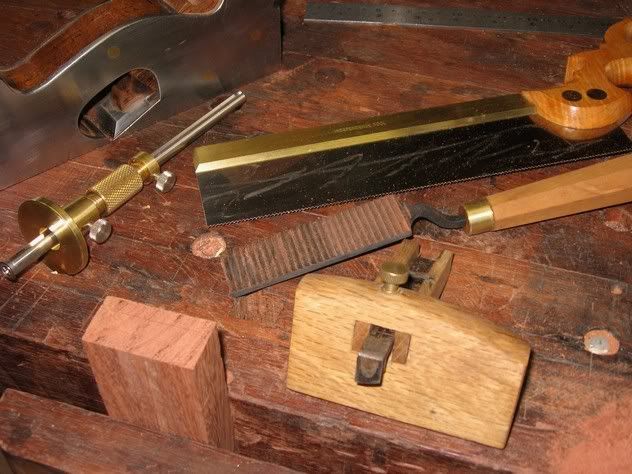
The plan is to compare tuning tenon faces using the joinery float, a rasp and a block plane.
The Joinery Float
The float is capable of removing a lot of waste very rapidly when used on hardwood. Before I sharpened the teeth, it had a feel more of a file, producing more dust than shavings. Once sharpened, the teeth could be felt biting into the wood.
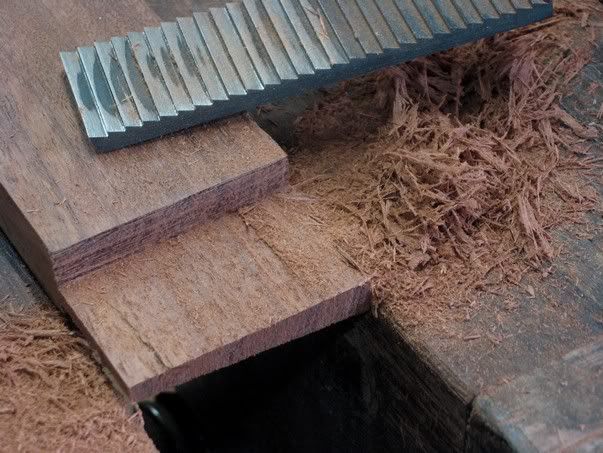
I liked the control that the float gave. It was stable in use and left a flat, smooth finish to the tenon face.
Using the float on Pine was a less satisfactory story. Cutting across the grain now produced fine shavings and sawdust.
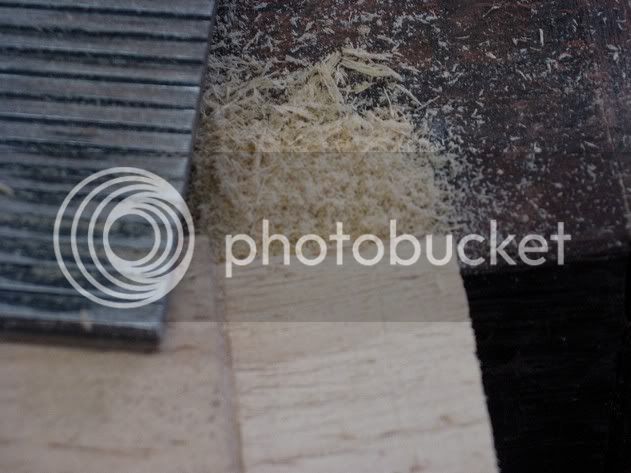
The Rasp
I used an Auriou AU-8-250-6, which is close in grain size to a Nicholson #49. In other words, it is quite a coarse rasp.
The Auriou cut fast, leaving a marked but acceptable smooth face.
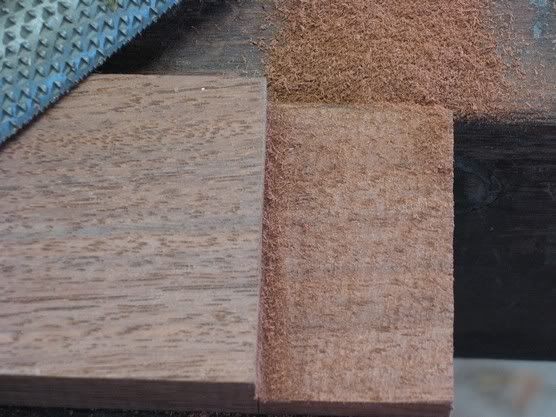
I like the rasp for use here, but I warn that use of one must be done with care. Its length makes it easy to tilt, and then it will create an off square face.
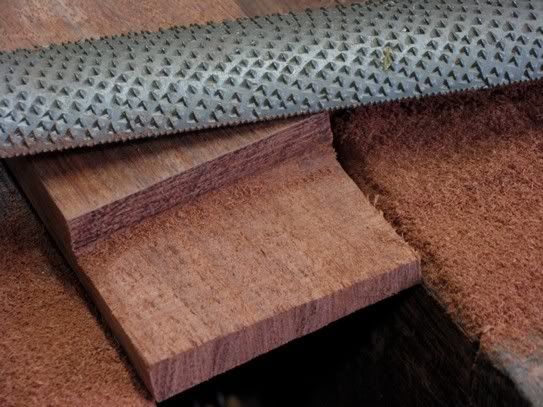
The performance of the rasp on soft Pine was very similar to that on hardwood.
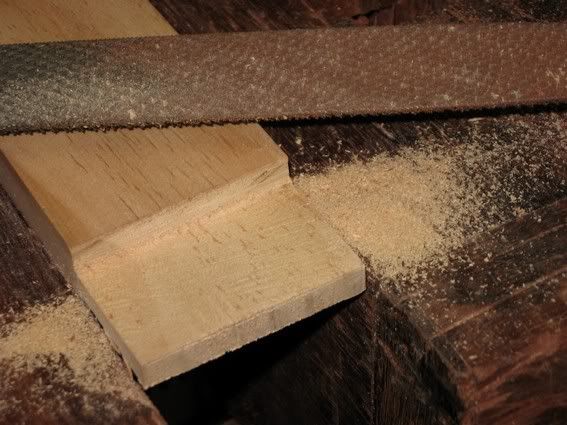
The Block Plane
The handplane of choice for tuning tenon faces is the Stanley or LN #140, a skew block plane.
Here is my Stanley #140.
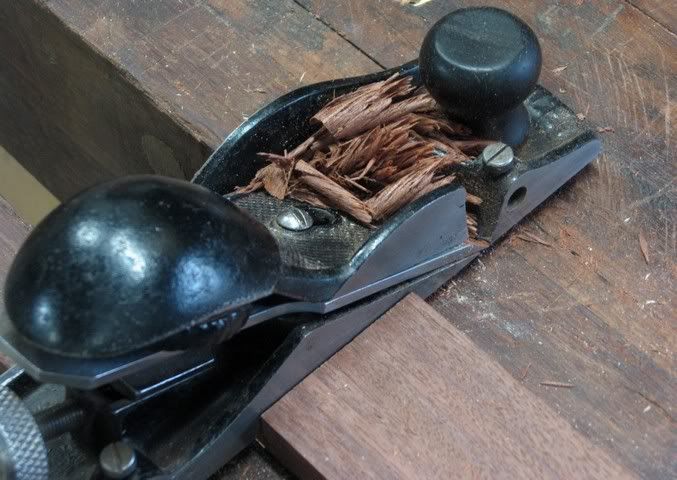
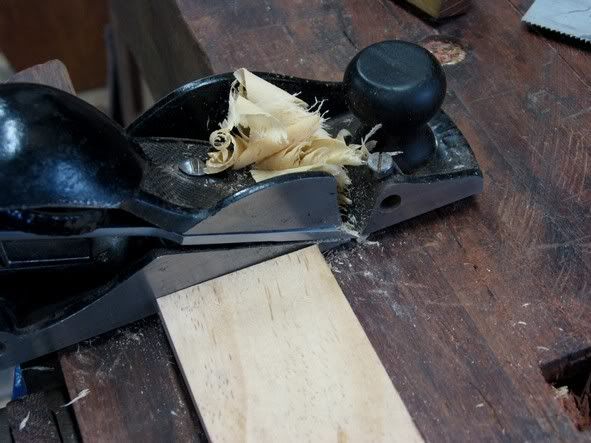
The #140 works equally well on hard- and softwood. It can remove a larger amount of waste quickly, which is, I believe, its advantage over the other tools here. It also produces the smoothest surface finish. However, like the rasp, care must be taken to keep the plane square.
Conclusions
When cutting tenons, I try to cut as close to the line as possible. Consequently, any tuning that needs to be done is usually a whisker here-or-there. A skew block plane gets the job done, but is sometimes like using a hammer to swat a fly. This is where the face float comes into its own. I liked the control it presented when removing waste. It could remove a little or a lot. The rasp is a possible alternative to the float, but it must be used with care. The bottom line is that a face float is a desirable tool for tuning tenons.
Derek Cohen
Perth, Australia
August 2007
Very recently Lie Nielsen released a set of joinery floats that were fashioned after the planemaker’s floats they were producing in association with Clark & Williams. These floats are intended to aid in the fine-tuning of joints used in cabinetmaking. There are three floats in all, two for mortices and one for tenons. The float under review is the Face Float for tuning tenons.


Construction and Dimensions
The face float is available in a push or pull version. I purchased the push version because I found this to be the more natural action.
According to the LN website, these are made from S-7 tool steel, hardened and tempered to RC 50-52 for edge life and resharpening ability. 8tpi, 80° rake angle, maple handles. It is 1” wide and 3 3/8” long.
Preparation
While the floats come sharpened and may be used straight out of the box, it is recommended that the teeth be first filed. I will reinforce this recommendation as I did initially use the float without filing the teeth, and was disappointed in the performance.
To illustrate the difference, I did a test with half the teeth filed and the other half original. Here is the result:

Top unfiled, bottom filed.
Filing the teeth
LN suggests a 6 inch double extra slim taper file for sharpening. I did not have one to hand, so first tried with a 4 inch double slim taper Groblet, a file I use for sharpening a 15 tpi dovetail saw. This proved to work exceedingly slowly, and so I turned to a 6” extra slim Nicholson file. This ended up being a good choice.
Finally I found a use for my Zyliss vise! It made a good support for filing the float.
From the LN website ….
Initial sharpening: The black oxide coating of the floats is an aid in the initial sharpening. Simply file away the black coating to shiny metal for the first sharpening. Use care to apply a slight even pressure on the file to maintain the cutting geometry. On wider sections you may notice some very slight distortion showing as slightly low spots on the faces of the teeth. This is normal and is the result of volumetric changes and stresses of heat treating. It’s not necessary to remove the hollow, establishing a good cutting edge on the teeth is the goal.
The full instructions may be found on the LN website.
Below I am supporting the file flat on the face and against the gullet.

Here is the half-original, half-sharpened result. Note the hollows in some of the faces.

The LN face float is well made. Perhaps the only criticism is the need to sharpen it before it can be used. On the other hand, this will need to be done at some time anyway - not as often as a plane blade, but more much frequently than a handsaw. The initial filing was a relatively straight forward affair, and time will tell whether this is a task that remains so.
Cutting and Tuning Tenons
I generally cut tenons with either a backsaw or a bandsaw. For this assessment, I prepared a few in both Jarrah (representing hardwood) and construction Pine (representing softwood).

The plan is to compare tuning tenon faces using the joinery float, a rasp and a block plane.
The Joinery Float
The float is capable of removing a lot of waste very rapidly when used on hardwood. Before I sharpened the teeth, it had a feel more of a file, producing more dust than shavings. Once sharpened, the teeth could be felt biting into the wood.

I liked the control that the float gave. It was stable in use and left a flat, smooth finish to the tenon face.
Using the float on Pine was a less satisfactory story. Cutting across the grain now produced fine shavings and sawdust.

The Rasp
I used an Auriou AU-8-250-6, which is close in grain size to a Nicholson #49. In other words, it is quite a coarse rasp.
The Auriou cut fast, leaving a marked but acceptable smooth face.

I like the rasp for use here, but I warn that use of one must be done with care. Its length makes it easy to tilt, and then it will create an off square face.

The performance of the rasp on soft Pine was very similar to that on hardwood.

The Block Plane
The handplane of choice for tuning tenon faces is the Stanley or LN #140, a skew block plane.
Here is my Stanley #140.


The #140 works equally well on hard- and softwood. It can remove a larger amount of waste quickly, which is, I believe, its advantage over the other tools here. It also produces the smoothest surface finish. However, like the rasp, care must be taken to keep the plane square.
Conclusions
When cutting tenons, I try to cut as close to the line as possible. Consequently, any tuning that needs to be done is usually a whisker here-or-there. A skew block plane gets the job done, but is sometimes like using a hammer to swat a fly. This is where the face float comes into its own. I liked the control it presented when removing waste. It could remove a little or a lot. The rasp is a possible alternative to the float, but it must be used with care. The bottom line is that a face float is a desirable tool for tuning tenons.
Derek Cohen
Perth, Australia
August 2007

































